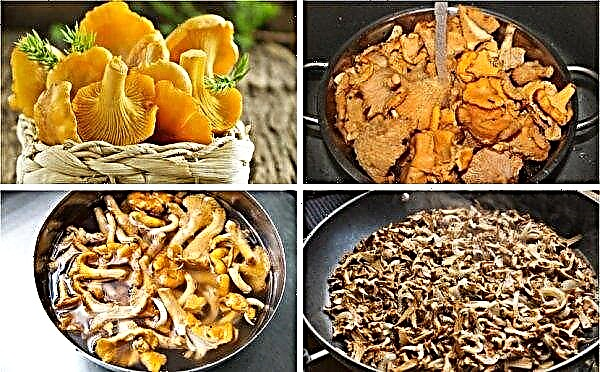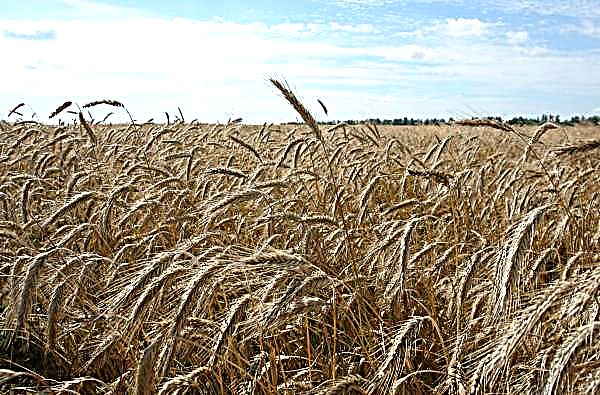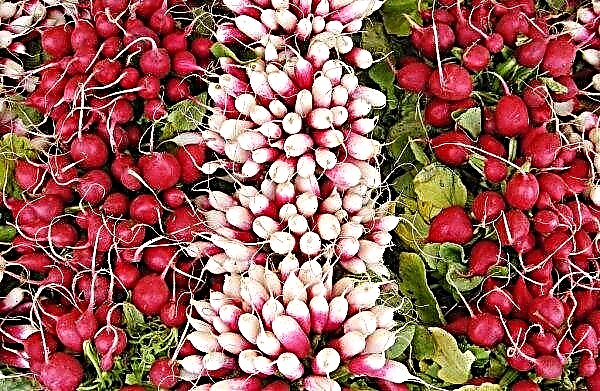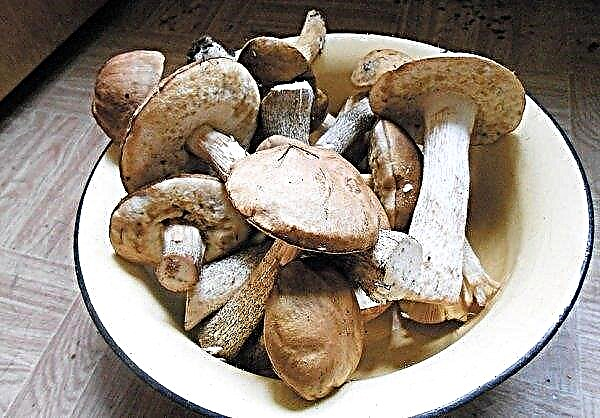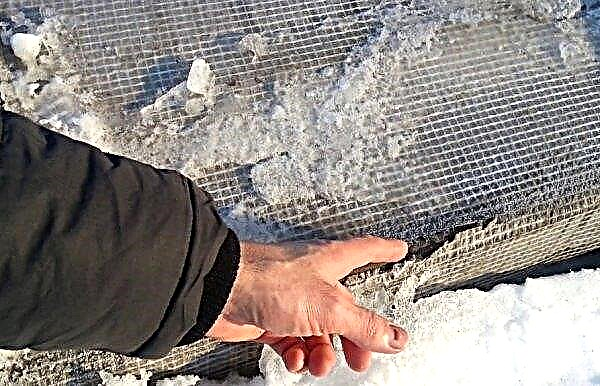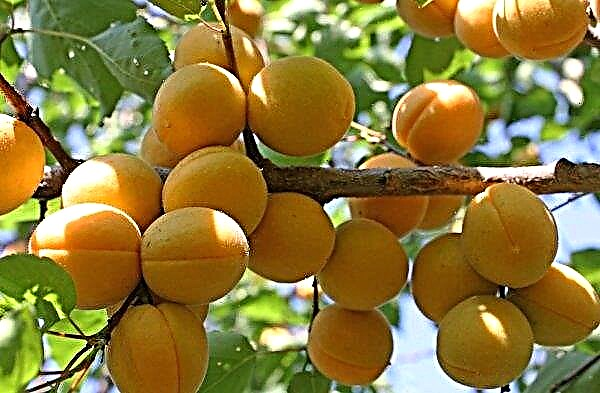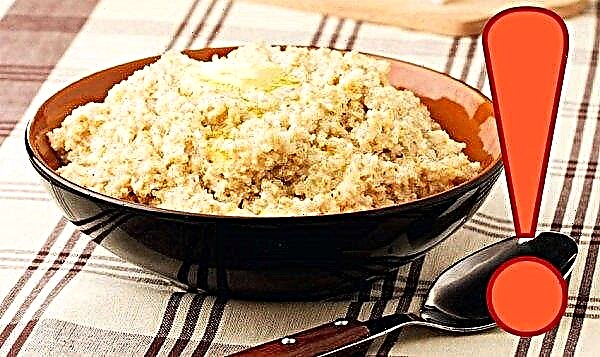Eggplant is a valuable and very necessary vegetable, rich in useful trace elements and vitamins. In addition, the dishes from this product are distinguished by excellent taste, so the desire to preserve eggplant as long as possible is understandable. This will be discussed in the proposed material.
Storage preparation
Proper preparation is the basis for the longest possible preservation of vegetables for the winter without loss of quality.
Did you know? Botany classifies eggplant as a berry, and cooking — like a vegetable.
To do this, adhere to the main recommendations:
- If the eggplant is from its own garden, then it is necessary to collect them in warm, non-hot weather - this will protect against fungal infections.
- When harvesting, the fruit stem should be kept at a length of 3–3.5 cm, this will prevent the vegetable from drying out.
- Eggplants, selected for storage, should be dense, with a smooth bright purple peel.
- Fruits with traces of damage, as well as overripe ones, are discarded.
- After selection, the vegetables are dried throughout the day in a dark, sufficiently ventilated area; if the weather permits - in the fresh air, then they should be covered with opaque material.
- Vegetables are cleaned with a dry rag or napkin, washing under water is excluded.

Fresh storage methods
Before deciding where and how best to store these vegetables at home, you need to consider a number of general rules:
- Late cultivars with a ripening period of 140 days and more, as well as mid-ripening ones, with a ripening period of up to 130 days are better suited for long-term savings.
- Eggplant is allowed to be stored in an open bag made of polyethylene, but only in the refrigerator or in an unlit cool place.
- It is also acceptable to use a newspaper or any other paper - this method is used when saving both in the refrigerator and in drawers.
- When stored in boxes, the fruit should be sprinkled with river sand - it will slow down the evaporation of moisture, which will preserve their juiciness and freshness.
- The best humidity for storing vegetables is 85–90%. With poor moisture content, they lose their juiciness, and the peel wrinkles.
- Pouring salt is not only a good way of saving, but also a method of removing bitterness.
Important! Storage in the light or under direct sunlight is strictly unacceptable. — under such conditions, the organic compound solanin is produced in eggplant, which, being a poisonous glycoalkaloid, is toxic to humans.
In the cellar or basement
In such rooms, as a rule, favorable storage conditions - temperature + 3 ... + 5 ° С and air humidity of 75–85%.
There are several ways to save blanks in the cellar (basement):
- Shelves lay with straw. Wrap eggplant (each fruit) in paper and lay it on prepared racks.
- Fruits are stacked in a box, with each of their layers sprinkled with dry sand or ash. The temperature at the place of saving should not be higher than + 7 ° С.
- Two or three eggplants are wrapped in paper (polyethylene) bags, air is squeezed out of the bags to the maximum, then they are firmly tied. After that, they are folded into standing on the floor drawers with holes for ventilation. Above the box is covered with straw, old newspapers or sawdust.
- Eggplants are folded into a grid and suspended. This is allowed if the room has good ventilation, and the air temperature is not higher than + 3 ° C.
Indoor
To store eggplants in an apartment or at home, they will need to create a suitable environment with a temperature range of + 3 ... + 5 ° C, a humidity of 75–85% and the complete absence of any light.
For this, a loggia or an insulated balcony is suitable. With this method, each eggplant is wrapped in cling film and placed in a wooden box, which, in turn, is covered with dense material from the light.
In fridge
To save in the refrigerator, each vegetable is also wrapped with cling film, but even so, the eggplants must be placed in such a way as to exclude their contact with other fruits or vegetables, otherwise there is a risk of accelerating the rotting process.
They can also be saved in the form of semi-finished products. To do this, cut the fruit into circles, then fry a little or bake in the oven and send it to the refrigerator for storage. In winter, vegetable stew or paste can be prepared from the workpiece.
In the freezer
The most simple and affordable method in which all the valuable qualities of the product are preserved.
To do this, you must:
- In order to maintain the structure of the fruit after thawing, first blanch them (scalding with boiling water).
- Then cut the fruit (the shape of the slicing is arbitrary) and pour the pieces with coarse salt for 15–20 minutes. Then wash off the salt. This is done to eliminate bitterness.
- For freezing, the processed pieces are placed in plastic bags or wrapped with cling film, preventing air accumulation. But in food containers, freezing is excluded. You also need to consider: if the vegetables are cut into small cubes and put in one layer, they will freeze much faster.
Terms and conditions of storage
The shelf life of conditioned fruits depends on the method and the specific environment in which they are stored.
| Storage conditions | Term |
| Room conditions (house, apartment) | from 2 to 4 days |
| Balcony (cool pantry) | 1 month |
| Refrigerator | 1-2 weeks |
| Freezer | 1 year |
| Cellar (basement) | from 2 to 4 months |
| Sun-dried | from 3 to 6 months |
| In dried form | 1 year |
| Canned | 1.5–2 years |
How to store dried eggplant
First you need to consider how to properly dry.
There are three of them:
- In the oven. Washed fruits are wiped dry and cut into small pieces. Then they are laid out on a baking sheet in one layer and sent to the oven preheated to 200 ° C. Every 10-15 minutes, the oven door must be opened. The drying process takes about 6 hours.
- On air. Eggplant is cut into thin pieces and put on a strong thread (you can simply lay it out on a baking sheet with one layer), after which they are left to dry in a place inaccessible to direct sunlight. Product availability - four weeks later.
- Electric dryer. The algorithm of actions according to the instructions supplied with the device. The process will take approximately 5 hours.
Dried eggplants are stored in closed glass containers (bags) in the kitchen cabinet or suspended in the pantry. For cooking, pour water for an hour and a half, then squeeze out - and into the pan.
Did you know? In ancient times, eggplant was not eaten because of the bitter taste, but for the same reason it was considered an effective medicine.
The use of eggplants is enormous: with proper storage and skillful preparation, they are able to decorate any table, as well as bring considerable health benefits. And knowing how to prepare them for the future, you will not be left without a tasty snack in the middle of winter.

